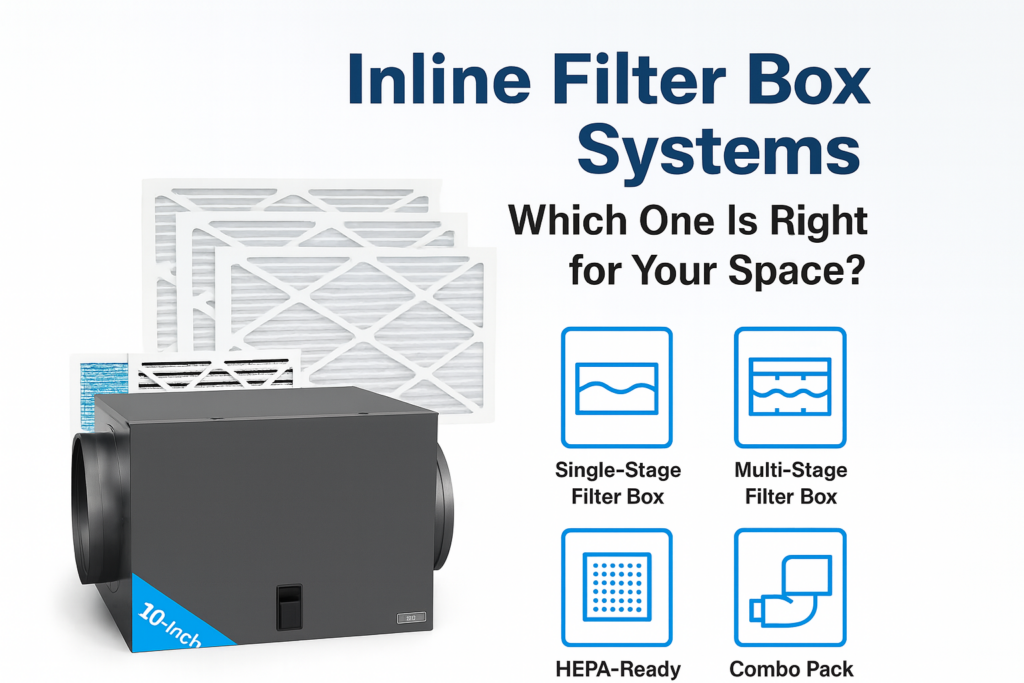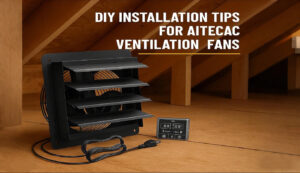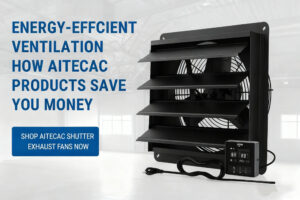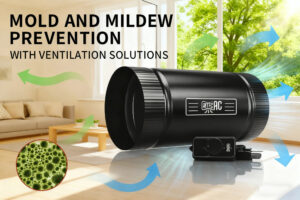Indoor air quality has become one of the most important factors in creating healthy, productive environments, whether in homes, offices or industrial facilities. According to the EPA, indoor air can be 2 to 5 times more polluted than outdoor air. That’s where inline filter box systems come in. They are silent guardians, removing dust, smoke and harmful particles before they circulate through your ventilation system.
Choosing the right one is crucial because the wrong choice can lead to poor airflow, increased maintenance costs and subpar air purification. This article explains how inline filter box systems work, their differences and how to choose one that fits your space.
What is an Inline Filter Box?
An inline filter box is a filtration housing installed directly into HVAC ductwork. It allows all airflow to pass through a filter before it reaches living spaces or sensitive equipment. Unlike standalone air purifiers, these systems are part of the ventilation infrastructure so every cubic foot of air is filtered.
Most inline filter boxes are made from galvanized steel or aluminum, often with a powder-coated finish to resist corrosion. They have removable lids or hinged doors for easy filter replacement. This makes maintenance a breeze and keeps your system running smoothly.
Key Benefits of Inline Filter Boxes:
- Whole-system filtration: Filters all air passing through the ducts
- Protection for HVAC equipment: Prevents dust buildup on fans and motors
- Versatility: Works for residential, commercial and industrial systems
- Customizable filtration: Accepts various filter ratings (MERV-8 to MERV-13 and HEPA)
- Seamless integration: Fits into existing ductwork with minimal disruption
What to Consider When Choosing an Inline Filter Box
Not all inline filter boxes are created equal. Here’s what to look for:
1. Size and Airflow Capacity
The box should match your system’s airflow rating (CFM – cubic feet per minute). Oversized boxes can cause pressure drops, while undersized ones restrict airflow and strain your fans.
2. Filter Type and MERV Rating
Filters come with MERV ratings (Minimum Efficiency Reporting Value). MERV 8–10 is Basic filtration, good for dust and pollen. MERV 11–13 is Superior filtration, capturing smaller particles like mold spores and bacteria.
MERV 14+ is Hospital-grade filtration for critical environments. Choosing the right MERV rating depends on your space’s needs. Higher ratings mean cleaner air but may require more powerful fans to maintain airflow.
3. Material and Build Quality
Look for a filter box made from durable, corrosion-resistant materials. Industrial and commercial settings demand equipment that can handle frequent use and occasional rough conditions.
4. Ease of Maintenance
Your team will need to replace filters regularly. A design with easy-access doors and tool-free filter changes saves time and reduces labor costs.
5. Compatibility
Ensure the box integrates seamlessly with your existing ventilation system without major retrofitting.
Types of Inline Filter Box Systems
Inline filter boxes come in different designs to meet various air cleaning needs. Some are simple and affordable, while others are made for high-performance applications. Choosing the right type depends on the level of filtration required, space and budget.
1. Single-Stage Filter Box
A single-stage filter box is the simplest type. It has one filter placed between the air intake and output ducts. This design works best in areas with minimal air pollution or where basic filtration is enough, like homes, small offices or spaces with moderate air quality concerns.
Key Benefits:
- Low cost compared to multi-stage systems
- Easy maintenance, just one filter to replace
- Minimal airflow resistance, so it runs efficiently
- Compact size, perfect for tight spaces
- Quick and simple to install
However, single-stage systems don’t filter as thoroughly as multi-stage options. They may need more frequent filter changes if used in dusty or polluted environments.
2. Multi-Stage Filter Box
Multi-stage filter boxes provide stronger air cleaning by using multiple filters in sequence. The first filter usually catches large particles, protecting the finer filters that follow. The final filter removes very small contaminants for cleaner air overall.
These systems are ideal for places where air purity is important, such as hospitals, labs or factories. They also last longer because the first filter takes most of the load, reducing wear on the other filters.
Key Benefits:
- Excellent filtration for different particle sizes
- Longer life for the final filter
- Can be customized with different filter combinations
Higher upfront cost, more complex installation, more airflow resistance (may need stronger fan)
3. HEPA Filter Box
HEPA filter boxes are designed to hold HEPA filters, the highest standard for air cleaning. HEPA filters remove 99.97% of particles as small as 0.3 microns. Ideal for clean rooms, hospitals, pharmaceutical facilities or homes with allergy or asthma concerns.
These boxes have tight seals to prevent air leaks around the filter and often include pressure monitoring ports to indicate when to replace the filter.
Key Benefits:
- Maximum filtration efficiency
- Required for ultra-clean air spaces
- Strong and durable construction
But, you need careful installation and fans strong enough to handle the extra airflow resistance. HEPA filters are more expensive, adding to long-term costs.
4. Combo Pack
Combo packs come as complete sets, including filter box, ducts, fans and sometimes noise reduction or airflow control accessories. Pre-matched by the manufacturer so all parts fit together.
Great for new installations or replacing entire systems. Saves time, removes compatibility worries and is often cheaper than buying parts separately.
Key Benefits:
- Hassle-free setup with all parts included
- Guaranteed compatibility
- Lower cost than buying components one by one
- Clear instructions for the whole system
The only downside is less flexibility. You have to go with the manufacturer’s chosen components. Some brands offer multiple configuration options to give you more choices.
Inline Filter Box Comparison
Here is a comparison of the most common configurations:
| Feature | Single-Stage Box | Multi-Stage Box | HEPA-Ready Box | Combo Pack (Aitecac) |
| Filtration Level | MERV-8 to MERV-13 | Pre-filter + MERV-13 | 99.97% @ 0.3 microns | MERV-10 + MERV-13 |
| Ideal Application | Homes, offices | Labs, restaurants | Cleanrooms, hospitals | Homes, warehouses |
| Installation Complexity | Easy | Moderate | High | Easy (pre-matched) |
| Maintenance | Low | Moderate | High | Easy, includes 4 filters |
| Cost Range | $70–$150 | $150–$250 | $300+ | Competitive, bundle savings |
Why Combo Pack Systems Are a Smart Choice

Installing a ventilation system piece by piece can be a headache. You have to ensure compatibility, size matching and airflow balance. A combo pack system removes all these issues by offering pre-engineered solutions. The Aitecac Combo Pack for Fresh Air Intake and Ventilation stands out in this category.
Benefits:
- Pre-Configured: No guesswork, optimized for airflow and filtration.
- High-Grade Filters: MEVR 10–13 options for excellent particle capture.
- Heavy Duty: Designed for commercial and industrial use.
- Convenience: Comes with 4 filters, saves time and maintenance costs.
- Scalable: Suitable for multiple zones or large spaces.
Perfect for warehouses, restaurants, manufacturing plants and other areas where air quality and efficiency matters.
Why Choose Aitecac?
At Aitecac, we focus on providing ventilation system solutions that are durable, efficient and easy to use. Our combo pack filter box systems are engineered for long term reliability and optimized airflow. So you can have peace of mind.
When you choose Aitecac, you’re not just buying equipment; you’re investing in cleaner air, lower maintenance costs and peace of mind.
Conclusion: Choosing the Right Inline Filter Box
Choosing the right inline filter box is more than a purchase. It’s an investment in health, comfort and system efficiency. It depends on air quality goals, budget and system compatibility. If you’re ready to improve your indoor air quality, consider the Aitecac Combo Pack. It removes the guesswork, saves you money and ensures compatibility.
Better Air. Better Health. Better Investment. Don’t wait for dust and contaminants to harm your system. Upgrade today for fresher air.





